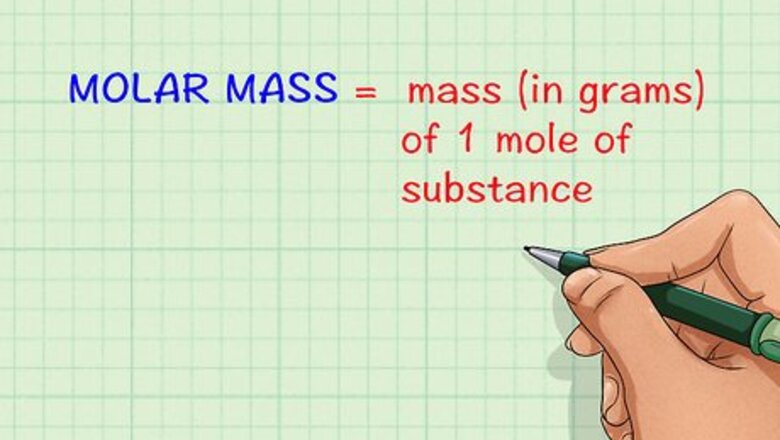
views
X
Research source
which is roughly 6.022 x 1023 atoms. This number is called Avogadro's number or Avogadro's constant.[2]
X
Research source
This constant is used as the number of atoms given by one mole for any substance, and the mass of 1 mole of a substance is its molar mass.
Calculating the Molar Mass of an Element
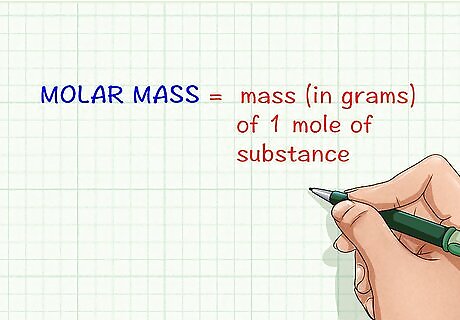
Understand molar mass. Molar mass is the mass (in grams) of one mole of a substance. Using the atomic mass of an element and multiplying it by the conversion factor grams per mole (g/mol), you can calculate the molar mass of that element.
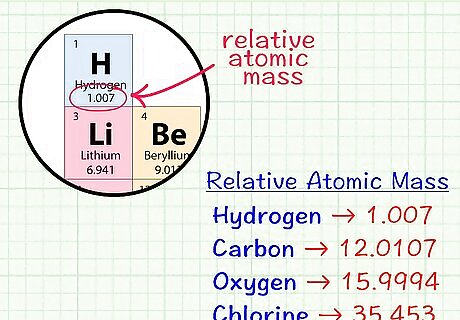
Find the relative atomic mass of the element. An element's relative atomic mass is the average mass, in atomic units, of a sample of all its isotopes. This information can be found on the periodic table of elements. Locate the element and find the number underneath the symbol for the element. It will not be a whole number, but will have decimals. For example, for hydrogen, the relative atomic mass is 1.007; for carbon, it is 12.0107; for oxygen, it is 15.9994; and for chlorine, it is 35.453.
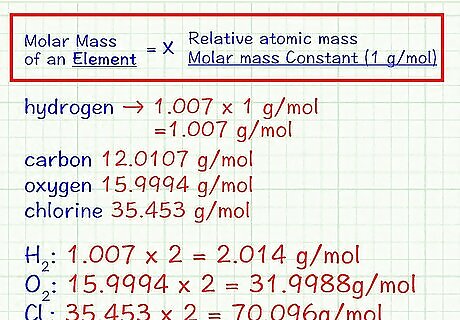
Multiply the relative atomic mass by the molar mass constant. This is defined as 0.001 kilogram per mole, or 1 gram per mole. This converts atomic units to grams per mole, making the molar mass of hydrogen 1.007 grams per mole, of carbon 12.0107 grams per mole, of oxygen 15.9994 grams per mole, and of chlorine 35.453 grams per mole. Some elements are only found in molecules of 2 atoms or more. This means that if you want to find the molar mass of elements that are composed of 2 atoms, such as hydrogen, oxygen, and chlorine, then you'll have to find their relative atomic masses. Multiply them by the molar mass constant, and then multiply the result by 2. For H2: 1.007 x 2 = 2.014 grams per mole; for O2: 15.9994 x 2 = 31.9988 grams per mole; and for Cl2: 35.453 x 2 = 70.096 grams per mole. One mnemonic device for remembering diatomic elements (molecules of 2 atoms) is: Have No Fear Of Ice Cold Beverages (Hydrogen, Nitrogen, Fluorine, Oxygen, Iodine, Chlorine, Bromine).
Calculating the Molar Mass of a Compound
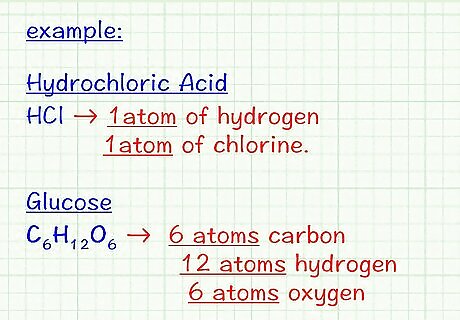
Find the chemical formula for the compound. This is the number of atoms in each element that makes up the compound. (This information is given in any chemistry reference book.) For example, the formula for hydrogen chloride (hydrochloric acid) is HCl; for glucose, it is C6H12O6. Using this formula, you can identify the number of atoms of each element that makes up the compound. For HCl, there is one atom of hydrogen and one atom of chlorine. For C6H12O6, there are 6 carbon atoms, 12 hydrogen atoms, and 6 oxygen atoms.
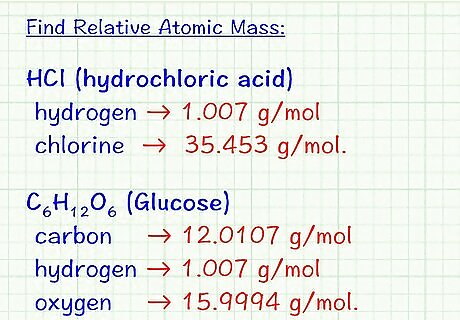
Find the relative atomic mass of each element in the compound. Using the periodic table, locate the relative atomic mass for each element. It is the number located beneath the symbol for the element. As we did in the first method of calculating the molar mass of an element, we will also multiply these masses by 1 gram/mole. The relative atomic masses of the elements in hydrochloric acid are: hydrogen, 1.007 g/mol and chlorine, 35.453 g/mol. The relative atomic masses of the elements in glucose are: carbon, 12.0107 g/mol; hydrogen, 1.007 g/mol; and oxygen, 15.9994 g/mol.
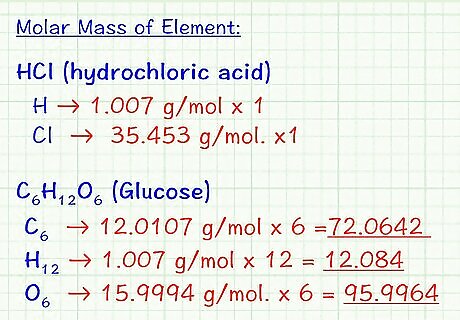
Calculate the molar mass of each element in the compound. Multiply the element's atomic mass by the number of atoms of that element in the compound. This will give you the relative amount that each element contributes to the compound. For hydrogen chloride, HCl, the molar mass of each element is 1.007 grams per mole for hydrogen and 35.453 grams per mole for chlorine. For glucose, C6H12O6, the molar mass of each element is: carbon, 12.0107 x 6 = 72.0642 g/mol; hydrogen, 1.007 x 12 = 12.084 g/mol; and oxygen, 15.9994 x 6 = 95.9964 g/mol.
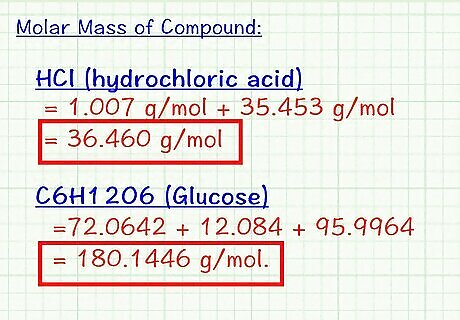
Add the molar masses of each element in the compound. This determines the molar mass for the entire compound. Take the products you obtained in the previous step and add them all together to calculate the molar mass of the compound. For hydrogen chloride, the molar mass is 1.007 + 35.453 = 36.460 g/mol. 36.46 grams is the mass of one mole of hydrogen chloride. For glucose, the molar mass is 72.0642 + 12.084 + 95.9964 = 180.1446 g/mol. 180.14 grams is the mass of one mole of glucose.

















Comments
0 comment